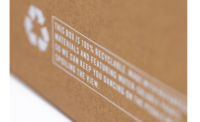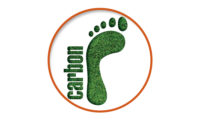Leading up to PRINT 13 and co-located CPP EXPO show where our industry will convene this fall, it’s the ideal time to consider the changing dynamics facing those in the packaging supply chain. For this purpose, I referred to a research study that my firm, Karstedt Partners authored for PRIMIR titled “Packaging: Evaluation of Vertical Markets and Key Applications” (2011 to 2015). The study took an in-depth look at five vertical sectors: Food, Beverage, Household Products, Personal Care and Healthcare (including Pharmaceuticals).
Addressing the flexible packaging sector, the report gave historic and forecasted basic consumption values through 2015.
The report further discussed pain points facing flexible packaging converters that suppliers can address, and some of this sector’s strengths.
Flexible packaging converters have been leaders in active and intelligent packaging for the past decade. The Freedonia Group projects growth in active packaging to be 6.5 percent per year to $1.9 billion in 2015. Advances in gas scavenger technology in food and pharmaceutical packaging are the drivers.
There are also continued opportunities in self-venting substrate usage of the type used in microwave popcorn. An example of how pervasive these capabilities are can be seen with the adoption of microwavable, steamed vegetable packaging. Originally developed for premium brands just a few years ago, it is now used for a very high percentage of products in the frozen vegetable and entrée section of grocery stores for national and private brands. Consumer preferences for more natural products with no or less preservatives are creating opportunities for packages that offer longer shelf lives for both fresh and processed foods.
Intelligent packaging, which is more a marketing and sales enhancing tool, currently comes in the form of QR codes and 2D barcodes that aid the brand in communicating with the customer. Freedonia projects expansion of this group now at 20 percent annually to reach $370 million in 2015.
Brands and retailers are pushing for packaging and materials that help food products stay fresher longer. Source reduction initiatives are becoming increasingly valuable with initiatives taken by major retailers and brand owners to evaluate supplier packages for eco-friendliness and cost reduction.
Increases in the application are also driven by continued conversions to standup pouches and flat pouches in a number of markets including sauces, dried foods and spices. Flexible packaging converters also benefit from the increased use of convenience features such as zippers and spouts integrated into pouches and the emergence of new applications and products such as flat-bottomed, side-gusseted pouches and hybrid pouch/folding carton products.
Growing efforts by retailers and brands to demonstrate their commitment to sustainability may lead to a renewed interest in paper, for its noted benefits: renewable, recyclable and compostable.
Growth in food applications that targets eat-on-the-run consumers will drive more costly film and barrier coatings to extend shelf life. These trends boost the demand for food in smaller package sizes, and more convenient foods designed to reduce food preparation time.
Trends toward healthier eating will encourage food manufacturers to expand their offerings of products, especially snacks, baked goods and beverages, in single serving packages. Such products require more packaging than standard packages of similar items.
The fastest growing food packaging markets for flexible packaging are: beverage, meat and related products and snack foods. In non-food applications, advances will be led by pharmaceutical and medical product markets based on heightened barrier requirements, cost and convenience advantages.
New developments in barrier resins, bio-plastics, recyclability, biodegradable films and compostable films will also drive market expansion.
Other factors influencing the flexible packaging application include considerable cost and material reduction programs by major food manufacturers, brand owners and retailers. Packaging waste reductioninitiatives at the local and government levels also impact flexible packaging producers.
Lean manufacturing programs are present at all levels of the flexible packaging segment. The goal of most converters is produce less waste, reduce setup times, maintain consistency within and between jobs, and gaining overall efficiency.
There are industry efforts to expand the acceptance and use of digitally imaged flexo plates. In-the-round imaging has limited implementation to date. Other industry technologies that are in the ‘ramp up’ mode are extended color gamut printing, G7 near neutral calibrations and in-line full web defect detection
systems. One of the great successes of recent years in flexographic printing is the relative acceptance of High Definition Flexography (HD Flexo).
This September, the strongest graphics and imaging show in North America, the global PRINT 13 show will welcome the co-located CPP EXPO show (Converting and Package Printing Expo).
Everything from graphic design and prepress to package printing and converting will be available to see and “kick the tires,” all in one place – at PRINT 13.
Karstedt Partners
PRIMIR




